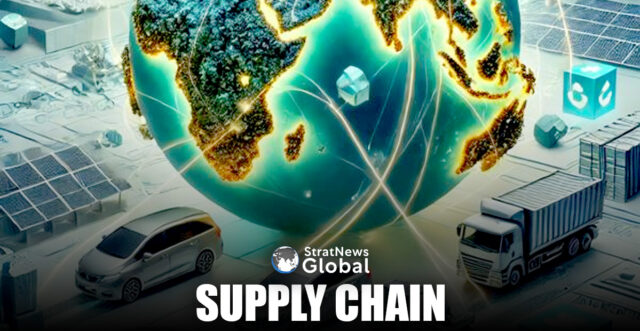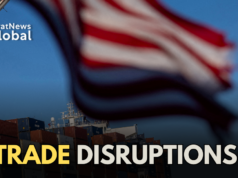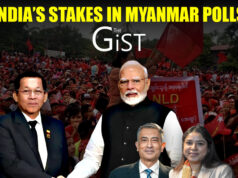India’s ambitious push toward achieving net-zero emissions by 2070 faces significant hurdles due to vulnerabilities in critical mineral supply chains, according to a recent report by the Centre for Social and Economic Progress (CSEP).
The report, authored by Karthik Bansal and Rajesh Chadha, highlights the urgent need for resilient supply networks to support the country’s green energy ambitions.
As the world transitions to cleaner technologies like solar panels, wind turbines, electric vehicles, and advanced batteries, the demand for minerals such as lithium, cobalt, and rare earth elements has skyrocketed. However, the CSEP report warns that the global concentration of extraction and processing in a few countries, particularly China, poses a major challenge for import-dependent nations like India.
According to the study, the top 10 lithium mines, primarily located in Australia, Argentina, and Chile, accounted for 76% of global production in 2022. Similarly, the Democratic Republic of Congo hosts eight of the world’s largest cobalt mines. Chinese companies dominate foreign ownership of these assets, making it harder for Indian companies to secure reliable supplies.
While India has launched critical mineral auctions to boost domestic availability, the success rate has been limited. The report notes that only 37% of the auctioned blocks were successfully awarded, with some auctions, like those for lithium blocks in Jammu and Kashmir, receiving no bids. Irrationally high bids, such as a staggering 752.5%, have further complicated the auction process.
CSEP emphasizes the need for India to attract major global mining companies with technical expertise and explore alternative funding mechanisms like offtake agreements—long-term contracts that guarantee future supply. Additionally, scaling up domestic mineral processing capacities, particularly for copper and rare earth elements, is crucial to reducing import dependence.
India’s current processing capacity lags behind global standards, with China processing nearly 60% of the world’s lithium. The lack of domestic processing infrastructure has driven India’s refined copper imports from 151,964 tonnes in 2019-20 to 155,038 tonnes in 2020-21. Copper demand for green technologies alone is projected to rise from 98,500 tonnes in 2025 to 368,143 tonnes by 2047.
Moreover, the report highlights the geographic concentration of processing plants. Leading companies like Albemarle, Tianqi Lithium, and Ganfeng Lithium, headquartered in the United States, China, and Australia, conduct most of their processing operations in China. This dominance not only gives China a competitive edge but also exposes countries like India to supply chain disruptions and price volatility.
The challenge extends to financing as well. Many critical mineral projects worldwide are backed by offtake agreements, which tie up future supplies and limit availability for other buyers. Prominent automakers like Tesla, Mercedes-Benz, and Toyota, along with technology companies like Siemens Gamesa and Glencore, have secured long-term supply agreements for lithium, copper, and rare earth elements, further tightening the market.
To address these challenges, the CSEP report recommends incentivizing domestic mineral processing, encouraging recycling from e-waste and end-of-life batteries, and strengthening partnerships through regional institutions like the QUAD and ASEAN.
Aligning production-linked incentives (PLIs) with upstream raw material procurement could also stimulate growth in the clean energy sector.
The Indian government has taken some steps in this direction, including the Production Linked Incentive (PLI) scheme aimed at boosting domestic manufacturing of solar PV modules, electric vehicle components, and advanced chemistry cells. However, the report notes that these initiatives have yet to translate into significant upstream manufacturing capacity for raw materials and components.
Experts argue that India must adopt a multi-pronged approach to build resilient and self-reliant critical mineral supply chains. This includes fast-tracking exploration licenses, offering fiscal incentives for domestic processing plants, and encouraging private sector participation in both extraction and refining.
Additionally, India can leverage its diplomatic ties to establish joint ventures with resource-rich countries, ensuring long-term access to critical minerals while promoting sustainable and ethical mining practices.
As India accelerates its green transition, strengthening critical mineral supply chains will be key to achieving its climate goals while ensuring economic and energy security. Without decisive action, the nation risks falling behind in the global clean energy race, further entrenching its dependence on imports and exposing its economy to supply shocks, says the CSEP report. .
In a career spanning three decades and counting, Ramananda (Ram to his friends) has been the foreign editor of The Telegraph, Outlook Magazine and the New Indian Express. He helped set up rediff.com’s editorial operations in San Jose and New York, helmed sify.com, and was the founder editor of India.com.
His work has featured in national and international publications like the Al Jazeera Centre for Studies, Global Times and Ashahi Shimbun. But his one constant over all these years, he says, has been the attempt to understand rising India’s place in the world.
He can rustle up a mean salad, his oil-less pepper chicken is to die for, and all it takes is some beer and rhythm and blues to rock his soul.
Talk to him about foreign and strategic affairs, media, South Asia, China, and of course India.





